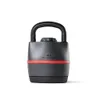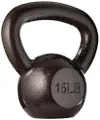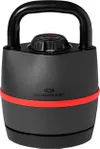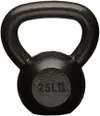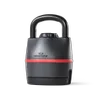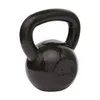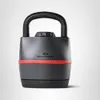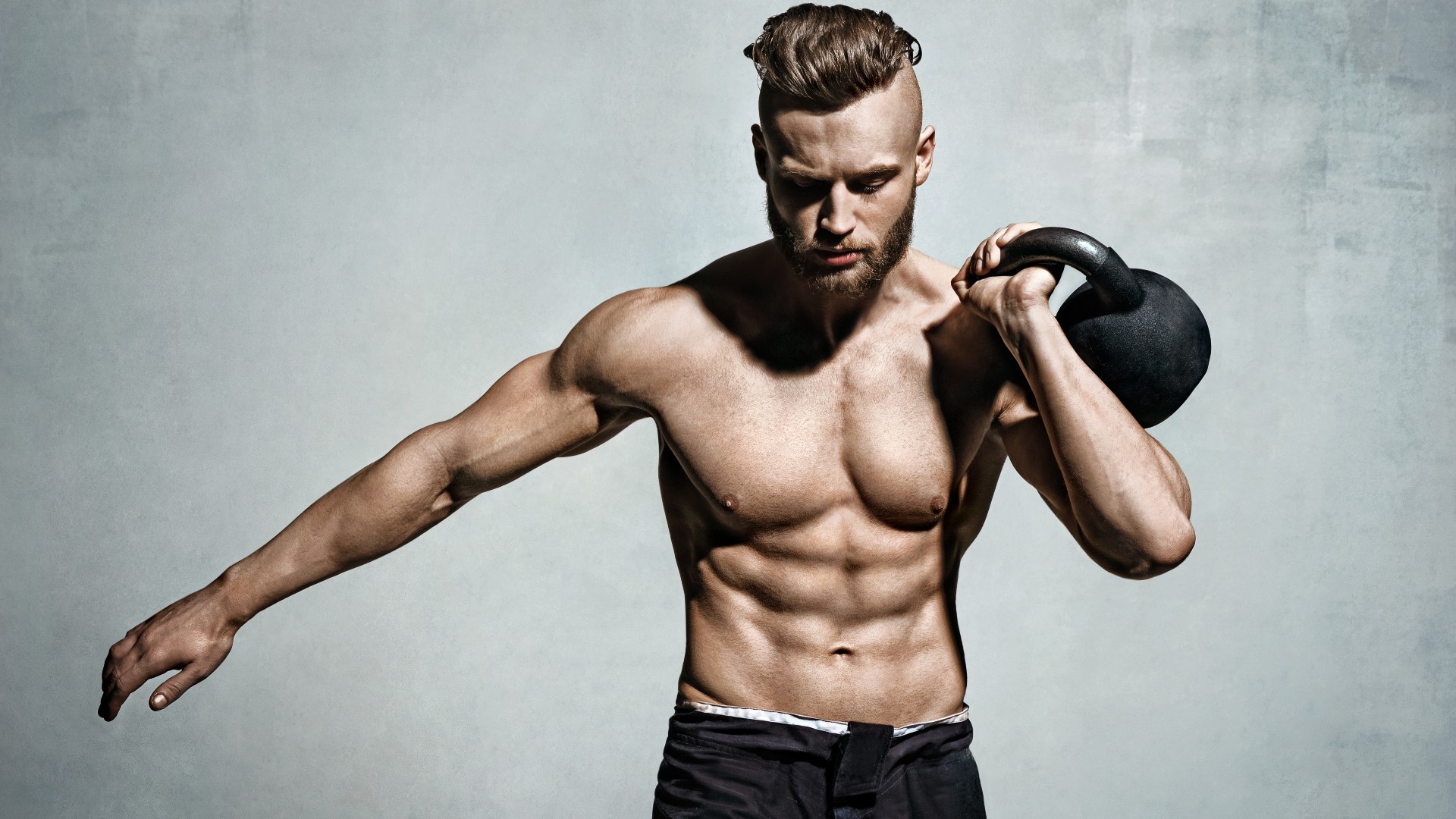
You just need 20 minutes and this five-move kettlebell routine to build functional strength, stamina and power like the infamously tanked and muscular Joe Rogan.
We recommend grabbing one of the best kettlebells for weightlifting — we include the Rogan-backed Onnit bells in our line-up — and following along with the routine below, shared by his co-founded Onnit brand and executed by Rogan.
Rogan is known for his beast-mode kettlebell workout style. He particularly enjoys kettlebell training and weightlifting alongside kickboxing, yoga and Brazilian Jiu-Jitsu, which he regularly discusses on his podcast. Plus, he’s a black belt holder in the latter, so the man knows how to train with serious discipline.
As shared by the Onnit team: “I don’t give myself the option to say, ‘I don’t feel like working out,’” Rogan says. “I give myself the option to make choices.” Here’s the five-move kettlebell workout, and everything you need to know to execute it.
What is Joe Rogan’s 20-minute kettlebell workout?
A post shared by Joe Rogan (@joerogan)
A photo posted by on
Anyone can access the kettlebell workout through Onnit as part of the ebook The Facts of Life With Joe Rogan. It follows a strength program Rogan favors when he has kettlebells to hand.
Famous strength coach Pavel Tsatsouline is known for the “greasing the groove” principle, which is a key principle Rogan sticks by and the basis of this workout. You’ll train submaximally at a percentage of your one-rep max, rather than reaching full fatigue and going toward all-out failure.
According to Rogan, “everything is clean and controlled with lots of rest in between,” without overtaxing the body. There’s nothing overcomplicated about this session; the five exercises are full-body or at least compound, effective and functional, hitting every major muscle group and developing core strength and power. Here’s the workout.
Get instant access to breaking news, the hottest reviews, great deals and helpful tips.
Warm-up
2 sets x 20 reps kettlebell swing
This is a hip hinge movement, so maintain a flat back and proud chest and drive backward and forward with your hips, rather than sitting into a squat. You can learn how to do a kettlebell swing in more detail. The team recommends “hiking” the bell between your legs and explosively extending your hips.
- Stand with your feet shoulder-width apart
- Softly bend your knees and grasp the kettlebell with two hands in an overhand grip
- Engage your core, swing the kettlebell back between your legs, then drive the kettlebell upward
- Engage your glutes and maintain a soft elbow bend
- Squeeze your glutes and snap your hips at the top of the movement, sending the kettlebell to shoulder height
- Allow the kettlebell to travel down and swing it between your legs again.
2 sets x 5 reps kettlebell windmill
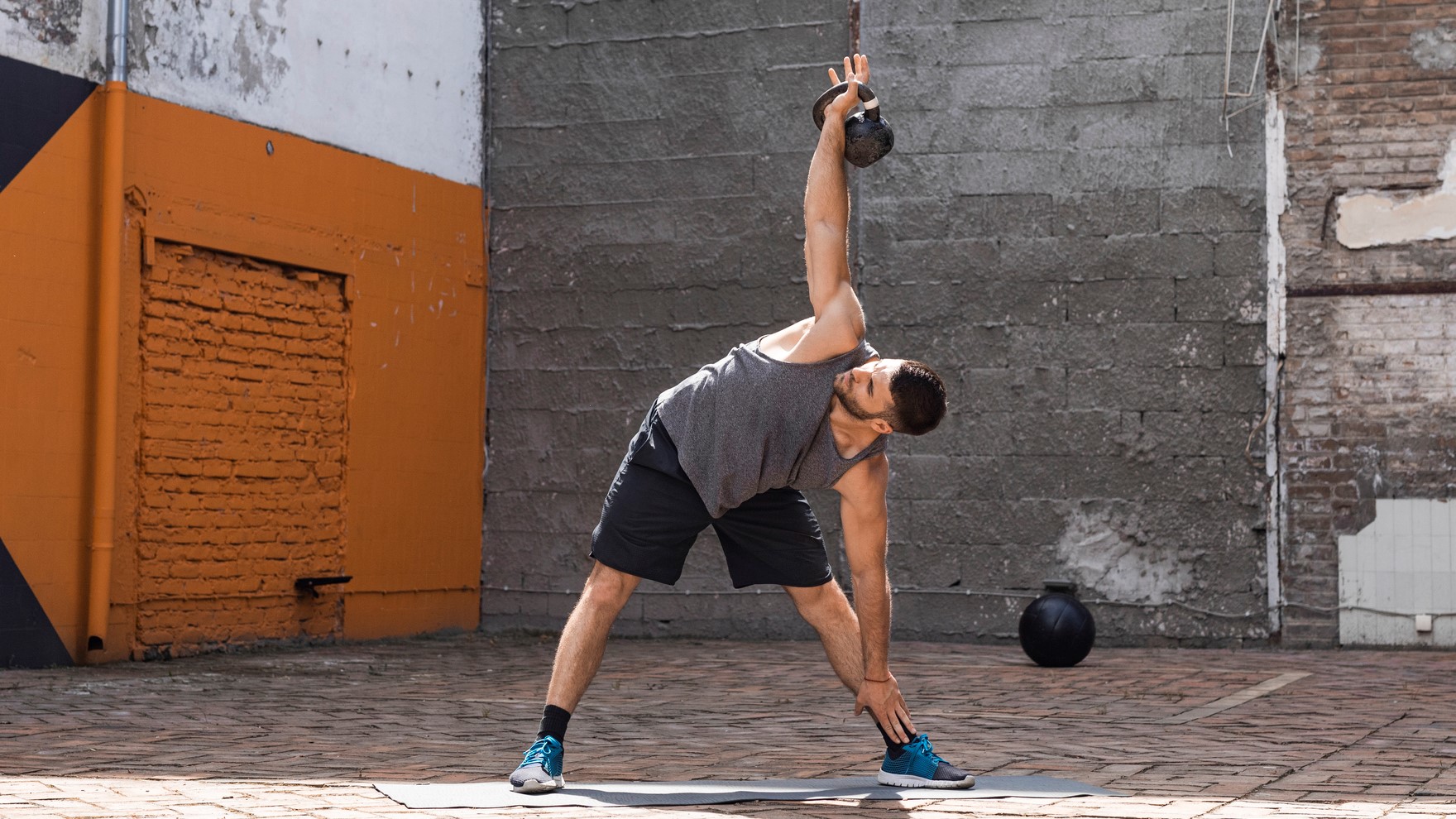
During the kettlebell windmill, the kettlebell should align directly over your shoulder joint. Keep your spine straight and keep the “trailing leg” (the one on the same side as the kettlebell) as straight as you can. This is a hip hinge motion.
- Stand with your feet slightly wider than shoulder-width apart, then clean and press a kettlebell overhead
- Start with the kettlebell in your left hand with your left arm locked out. Ensure that your left shoulder is rolled back and your lats are engaged
- Turn both of your feet slightly to the right, at 45 degrees, away from the weight
- Look up at the kettlebell and keep focused on it
- Engage your core, shift your left hip back and softly bend your right knee
- Place your right knuckles against the inner thigh of your right leg. Slide your right arm along the inner thigh, reaching your fingertips towards the floor
- Once you’ve reached the end of your range, lift back up to the starting position with control
- Complete your reps, then switch sides.
Working sets
The program advises choosing a load that you can perform 7 or 8 reps of, but you’ll only perform 5 — again, this comes down to submaximal loading.
Perform 3–5 sets for each exercise in any order. For example, the program allows you to alternate sets of chin-ups and dips or you could perform the three moves together as a circuit. Rest between sets to ensure your technique stays safe and on form.
Chin-ups

If you prefer, the team recommends practicing hanging from the bar, which helps stretch your shoulders and back and build grip strength.
Alternatively, instead of doing reps, you can simply hang from the bar, even if you warm up this way. Rogan starts with sets of 30-second hangs and does this for up to 2 minutes. You can choose chin-ups versus pull-ups based on how you want to emphasize your muscles. For example, chin-ups target more of the chest and biceps.
- Position your hands shoulder-width apart using an underhand grip — palms facing you
- Hang from a chin-up bar and contract as many muscles as you can
- Draw your shoulders downward
- Pull yourself up with control until your chin clears over the bar without swinging your body
- Slowly lower back down to the starting position.
Dips
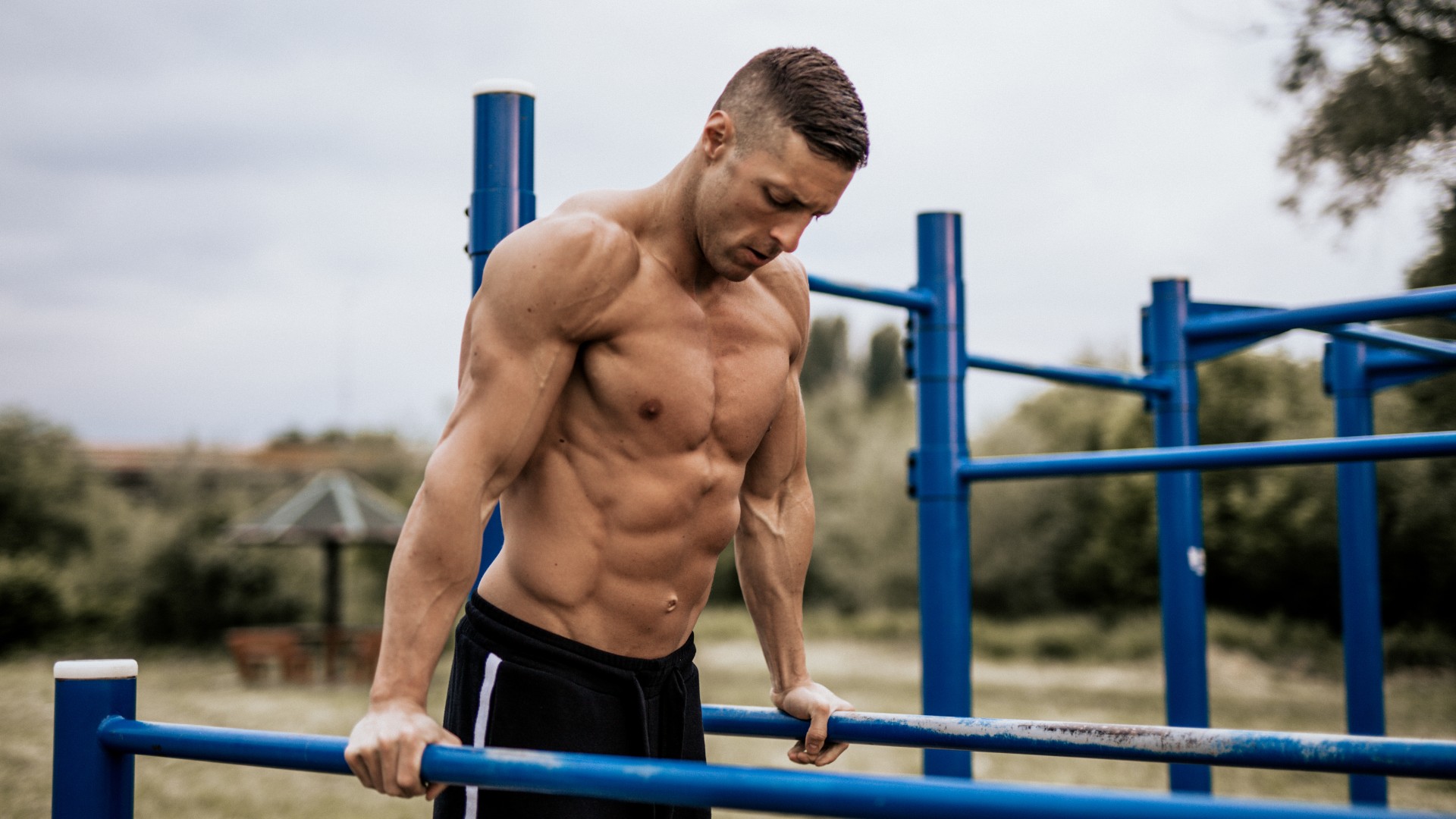
- Use parallel bars and suspend your body over them. Keep your torso tall, shoulders pulled down and spine straight
- Bend your elbows and lower yourself until both upper arms are parallel to the floor
- Push upward to the starting position and extend your arms.
If you find this too difficult, try using a sturdy bench and placing your hands on the edge, performing bench dips instead.
3. Overhead squat
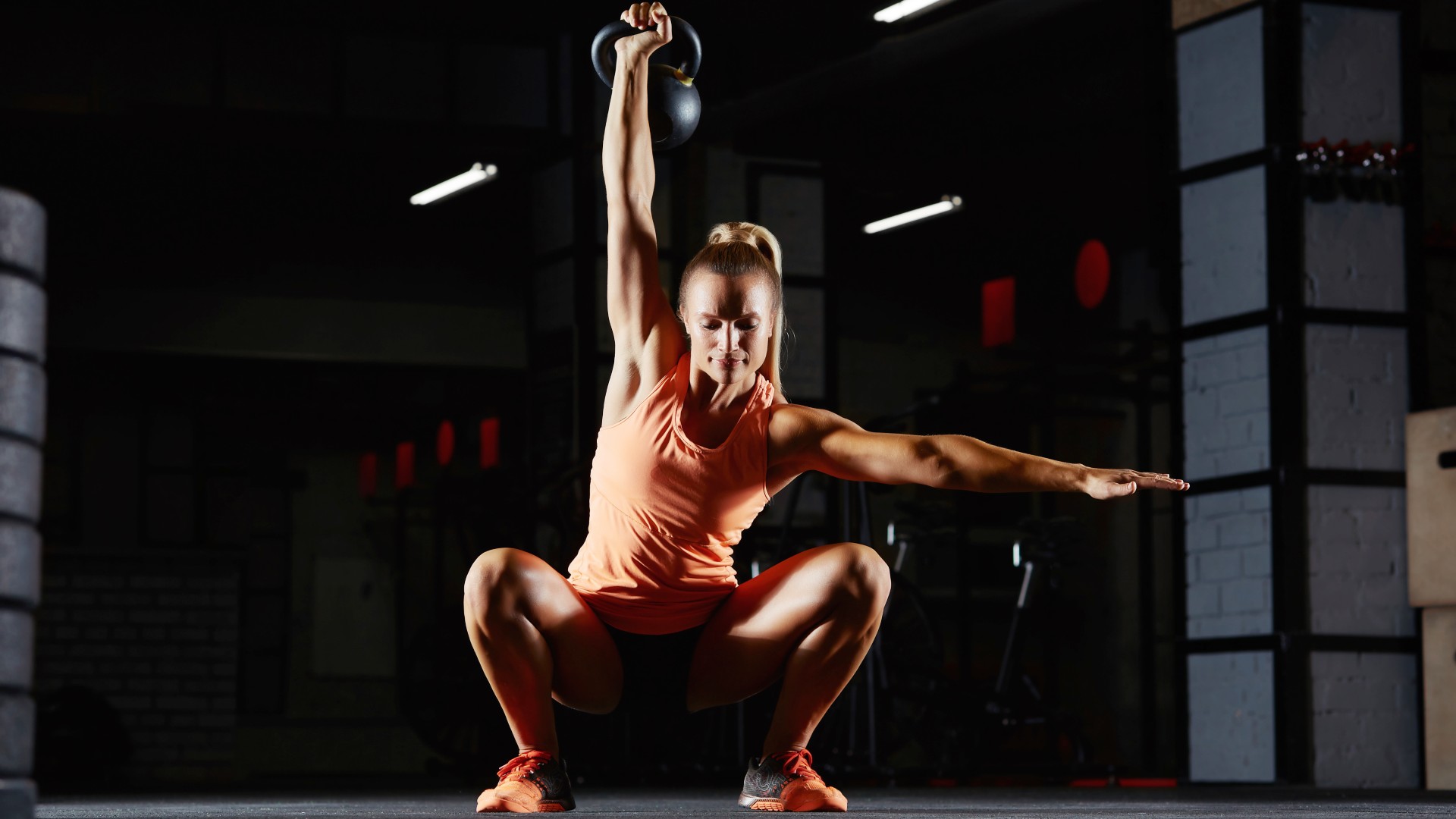
The overhead squat takes a degree of upper body and shoulder mobility to keep the weights pressed upward while squatting, but if you have tight hips, knees, or ankles, you might find your depth compromised, too. Start with one kettlebell and add another when you feel comfortable. Start light, then build up.
Working with one kettlebell will challenge your stability whereas two tests strength. Sit as low as you can into the squat.
- Stand with feet shoulder-width apart
- Press the kettlebell or bells overhead
- Perform a kettlebell squat by bending your knees, pushing your hips backward and sitting low into the squat position
- Keep a flat back and long spine and brace your core
- Avoid leaning forward and keep your chest proud
- Pause, then drive through your feet to stand.
More from Tom's Guide
- We asked a running coach why do sprinters need more muscle than distance runners — and tips on how to be a stronger runner
- Who needs crunches? This 3-move ab workout sculpts core muscle and boosts muscle endurance
- Forget squats — these 3 moves target your glutes and strengthen your lower body

Sam Hopes is a level 3 qualified trainer, a level 2 Reiki practitioner and fitness editor at Tom's Guide. She is also currently undertaking her Yoga For Athletes training course.
Sam has written for various fitness brands and websites over the years and has experience across brands at Future, such as Live Science, Fit&Well, Coach, and T3.
Having coached at fitness studios like F45 and Virgin Active and personal trained, Sam now primarily teaches outdoor bootcamps, bodyweight, calisthenics and kettlebells.
She also coaches mobility and flexibility classes several times a week and believes that true strength comes from a holistic approach to training your body.
Sam has completed two mixed doubles Hyrox competitions in London and the Netherlands and finished her first doubles attempt in 1:11.
